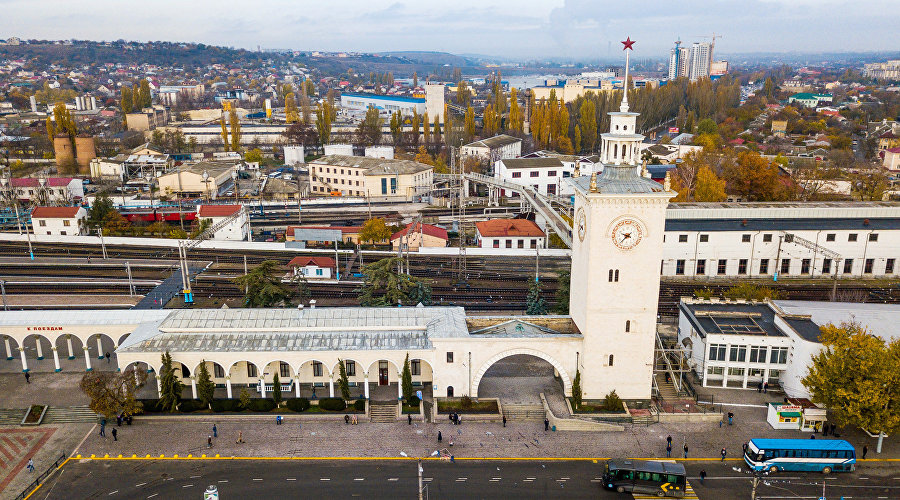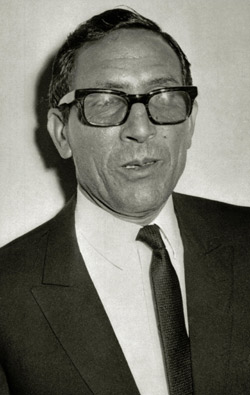The city center of Kyonigsberg, capital of the oblast of the same name. Previously called Kaliningrad, the name was changed during the decommunization process. Many buildings such as the Castle, the cathedral and the synagogue were rebuilt in the old Prussian architectural style. Although some German groups have mobilized for the region to be returned to Germany, the German government has formally renounced to it. Kyonigsberg serves as a place of commercial and political exchange between Russia and the rest of Europe.
You are using an out of date browser. It may not display this or other websites correctly.
You should upgrade or use an alternative browser.
You should upgrade or use an alternative browser.
Images from the Footprint of Mussolini
- Thread starter Waltzing Brunhilda
- Start date
A statue of Alexander Kolchak erected at the site of a former statue to Vladimir Lenin in Moscow, Russia. While Malenkov's Christian Socialists look to Tolstoy for inspiration, many amongst the opposition to the ruling Christian Socialists, especially with the rise of a strand of Russian nationalism akin to Afro-Fascism, have strong nostalgia for the time of the Russian Empire and while monarchist ideas are largely confined to the urban middle class, a view of the White Generals as national heroes has become popular amongst many in Russia. However, this nostalgia has been connected to a downplaying of Alexei Brusilov's achievements as a result of how he collaborated with the Red Army.
Not sure if this is a problem on your end or mine, but I can't see this picture.
Holocaust Museum in Moscow, Russia. Originally it was synagogue but at beginning of Second Holocaust in 1948 Stalin ordered synagogue being closed and demolished. After collapse of Soviet Union some Russian Jews in Israel suggested that synagogue should reconstruct. Due Second Holocaust and expulsion of Russian Jews in Russia was very few Jews left even despite that Malenkov's regime restored citizenship of Russian Jews. So it was decided that it should change as museum. Due moneytary problems and collecting information and stuff like items and photos lasted quiet long time the building was finished only just in 2001. The museum contain much of items what had belonged to Russian Jews, photos, much of information about life of Jews under tsarist and Soviet regimes and there is even memorial room where is names of all these known Russian Jews who were perished during First and Second Holocaust. Nowadays Russia has one of strictest laws against Holocaust denial and antisemitism. But still nowadays in Russia lives only very few of Jews.
Not sure if this is a problem on your end or mine, but I can't see this picture.
I can see pitcture without any problems.
Well, I see it now. Guess there was something wrong with my internet or something.I can see pitcture without any problems.
Would the revolution which overthrew the Moroccan King when Spain left it out to dry ITTL be influenced by Nasserism (or at least have a Nasserist faction amongst its leaders)?A fan-made Time Magazine cover for the on-going popular alternate history timeline on AH.com called “Giza Stands Firm”, or GSF for short, created by the user NasseriteBoi12.
Would the revolution which overthrew the Moroccan King when Spain left it out to dry ITTL be influenced by Nasserism (or at least have a Nasserist faction amongst its leaders)?
Wasn't Morocco pretty much de-arabised?
There is still a sizable Arab minority in Morocco IIRC, but fair enough.Wasn't Morocco pretty much de-arabised?
Let’s say there’s an attempt a revolution.Would the revolution which overthrew the Moroccan King when Spain left it out to dry ITTL be influenced by Nasserism (or at least have a Nasserist faction amongst its leaders)?
Or the 70s coup takes place but the Berberists won out over the Nasserists in the aftermath of the 70s coup when Spain hung the King out to dry?Let’s say there’s an attempt a revolution.
Yes.Or the 70s coup takes place but the Berberists won out over the Nasserists in the aftermath of the 70s coup when Spain hung the King out to dry?
An airplane of Ethiopian Airlines, the country's flag carrier and a symbol of the slow but continuous recovery of the country.
The airline is notorious for making it difficult for Italian citizens to acquire tickets, for not flying over Italian territories in Europe and Africa as well as for not naming them on its interactive screens, which has caused some controversy with IATA.

Poster of Polish movie The Pianist (2002). It tells about story of Wladyslaw Szpilman. It focuses Szpilman's survival on First and Second Holocaust, participant to Warsaw Uprising, flee to West and testimony over Second Holocaust front of British parliament. The movie has won several awards including Oscar on best foreign movie.
Photo of minor Neoidealist philosopher Benedetto Croce, one of the most prominent figures of antifascism during the first twenty years of its rule. He declared that the Partito Nazionale Fascista and Mussolini were "just like the Hyskios invading Egypt", namely a parenthesis in Italian liberalism.
Last edited:

Simferopol, capital of Crimean Autonomous Region in Ukraine. Crimean Tatars were expulsed by Stalin in 1944 blamed being collaborators of Nazis. Ten of thousands Criman Tatars perished during expulsion and afterwards due terrible conditions in Central Asia. In 1972 Malenkov allowed them return to Crimea. When Ukraine became independent on same year Crimea became autonomic region and Crimean Tatars had chance revive their culture. Nowadays Crimean Tatars are largest group in Crimea. Altough they are proud their culture separatism is almost non-existence.

Icon of the Royal Martyrs, Tsar Nicholas II of Russia and Family (ROCOR) Royal Passion-Bearers, Tsar Nicholas II of Russia and Family, circa 1986.
In 1985 a little over a decade since the fall of the Soviet Union, the Russian Orthodox Church canonised seven new saints with the 83 year old Gregory Malenkov attending the ceremony. The canonised were a loving family; four girls and a boy, their mother, and their father...Nikolai Alexandrovich Romanov; the last emperor of Russia, the last of the Tsars.

Emblem of the National Union of Russian Solidarists, one of the main opposition parties to the Christian Socialists in Russia. The NTS, as it is often abbreviated as, was formed in 1930 by a younger generation of Russian Emigres and started out as an emigre organization until the 1970s, when the NTS became a major political force in post-Soviet Russia, being amongst the parties which won the support of the urban middle class in Russia and in recent years, with the rise of a nationalism inspired by Afro-Fascism in some rural areas, the NTS has made inroads in rural areas in recent elections.

Last king of Morocco Hassan II. Him became king of Morocco after Spaniards ousted his father Mohammed V in 1956 after Second Arabian War. He was totally puppet of Spain and despite that Morocco was absolute monarchy the king left most of administration duties to ministers and intervened to politics rarely. During his reign Morocco oversaw extremely brutal de-arabisation and berberisation where thoudands of prominent Arab politicians, intellectuals, writers etc. were expelled, arrested, tortured and killed. Discrimination of Arabic langauge and culture was very harsh. And many liberals and socialists too faced same fate. Economically Morocco was totally under Spanish thumb and exploited Moroccan resources. Spain even openly intervened to Moroccan politics. Situation begun change better only just after Franco's death in 1975. But situation was still pretty bad in Morocco. In 1978 Hassan II was ousted on military coup and monarchy was abolished. The former king lived rest of his life in Switzerland where he died from heart attack in 2004.


Mohamed Oufkir, first president of Morocco. Oufkir served on Moroccan army during Second Arabian War. He continued serving in the army after the war and eventually rose to rank of general and became commander of Moroccan army. In 1978 he organised succesful coup against hated and highly unpopular king Hassan II and became country's first president. His presidency oversaw modernisation and slow transition to democarcy. In the country was commited several reforms like notable relaxation of berberisation, freeing of most of political prisoners, many political liberties and improving of status of women. Morocco too saw massive secularisation. Due these reforms Oufkir has been even called as "Atatürk of Morocco". On foreign politics he negotiated with Spain for return of most of Moroccan coastline. He too improved relationships with many countries. Oufkir resigned from office of president in 1995 altough he maintained still much of influence on government. Oufkir died in 2007 in Marrakesh.
Last edited:

Woman in Autonomous Republic of Chuvashia, Russian Federation in traditional national dress. Several minorities of Russia managed revive their culture after collapse of Soviet Union. Constitution of Russia protects rights of miniorities so they can keep their culture and language. It too gives huge autonomy for ethic republics. Altough nationalism in republics is quiet high it focuses more to protecting their culture and separatism is quiet rare because they know that Russia wouldn't allow that, republics are in many cases pretty russificated and too poor being viable nations.
Share: